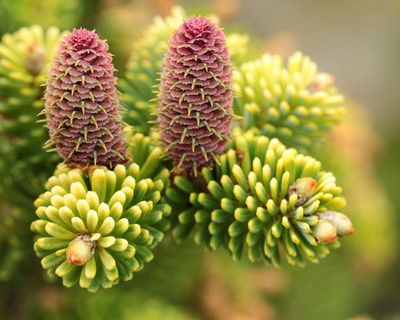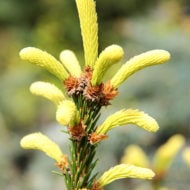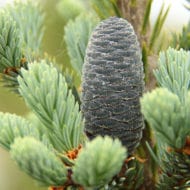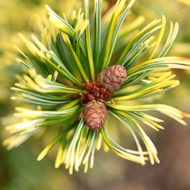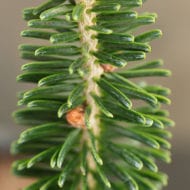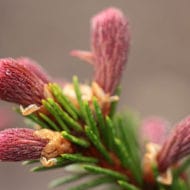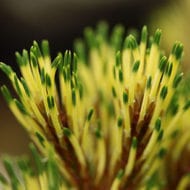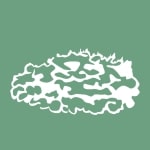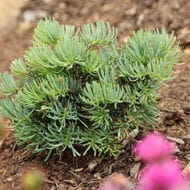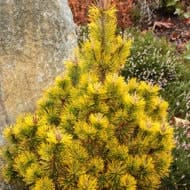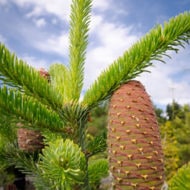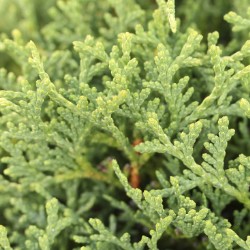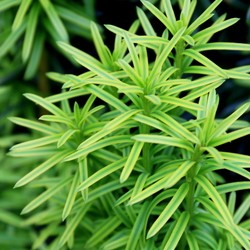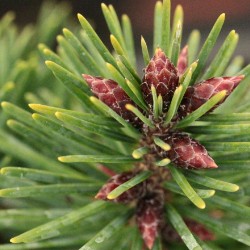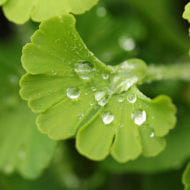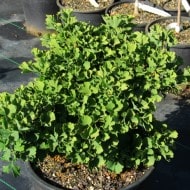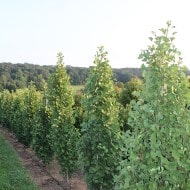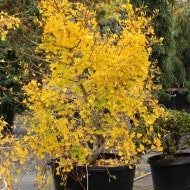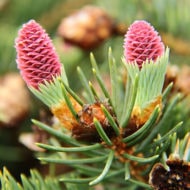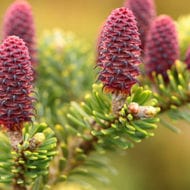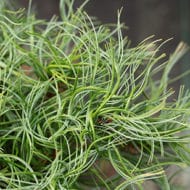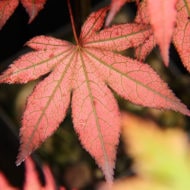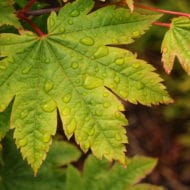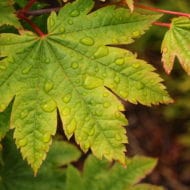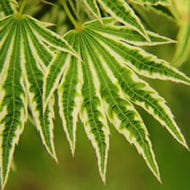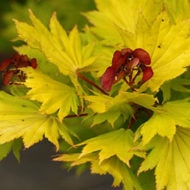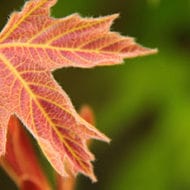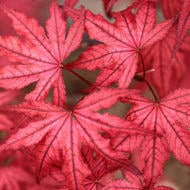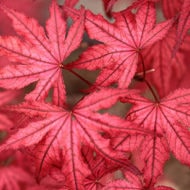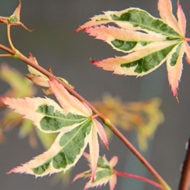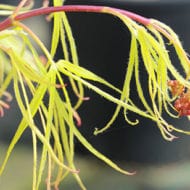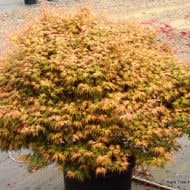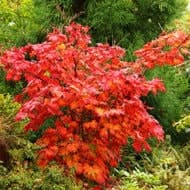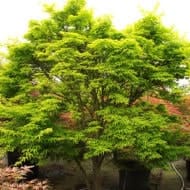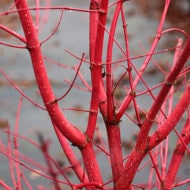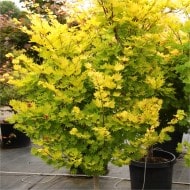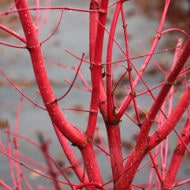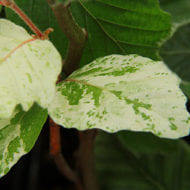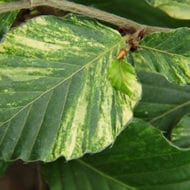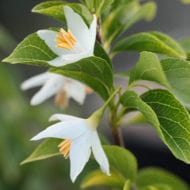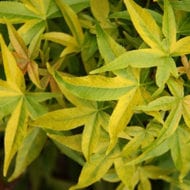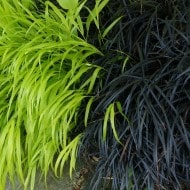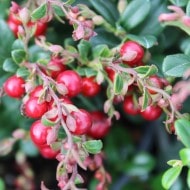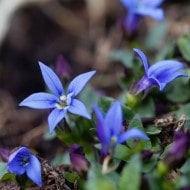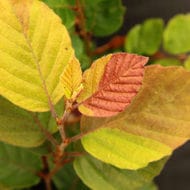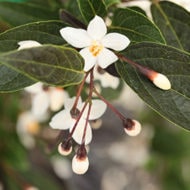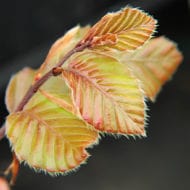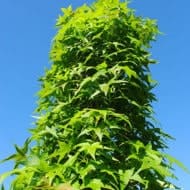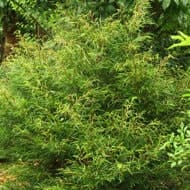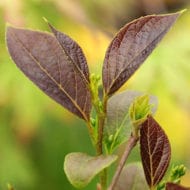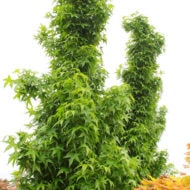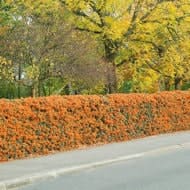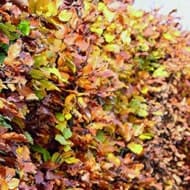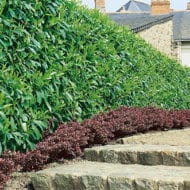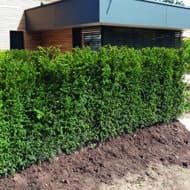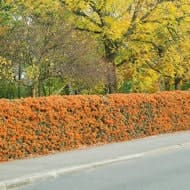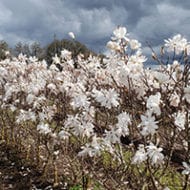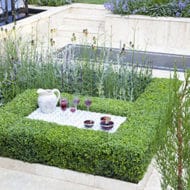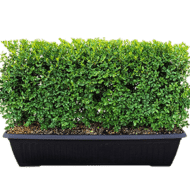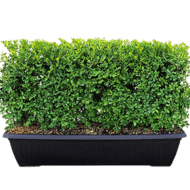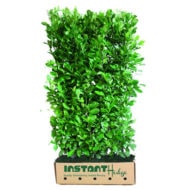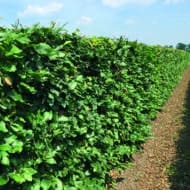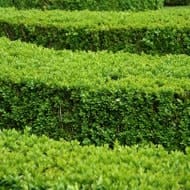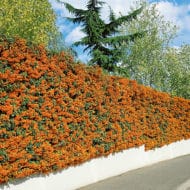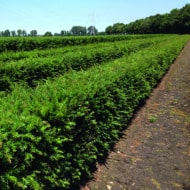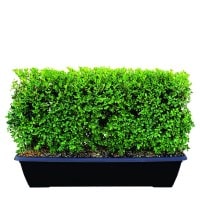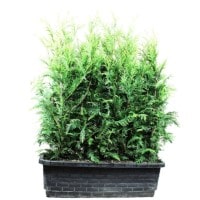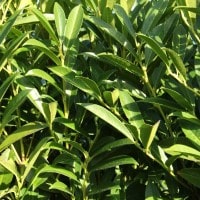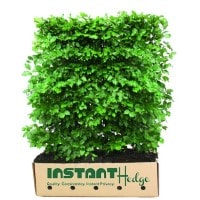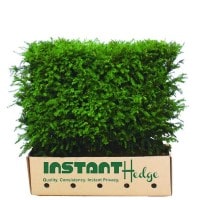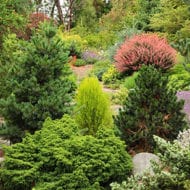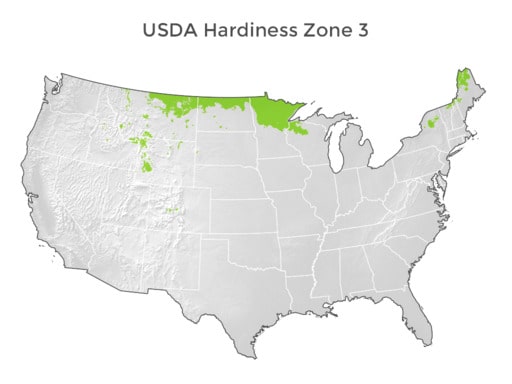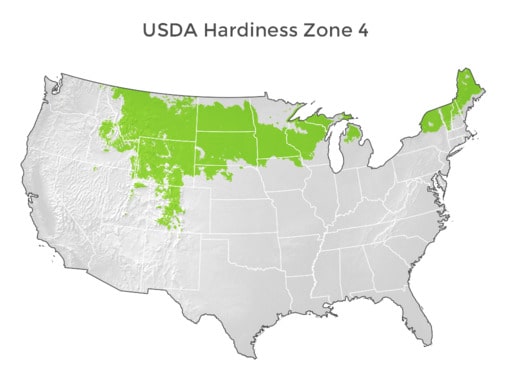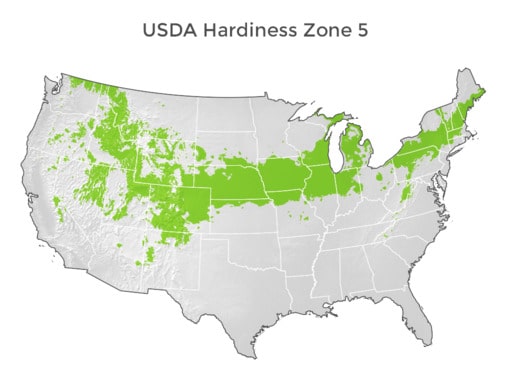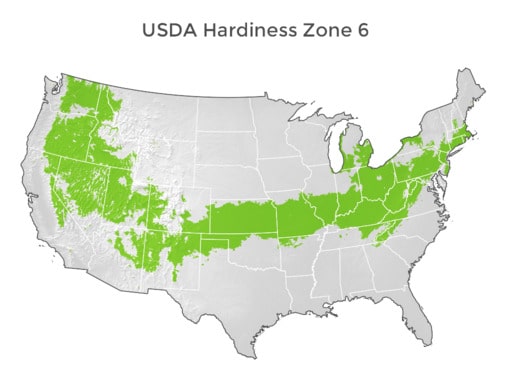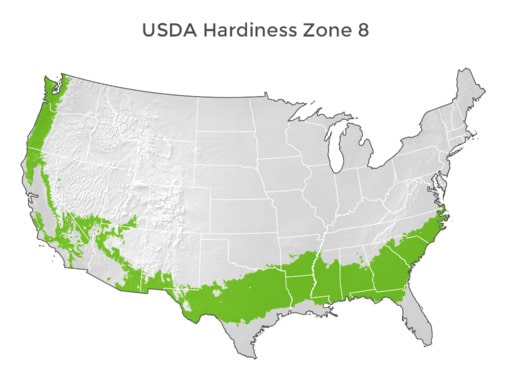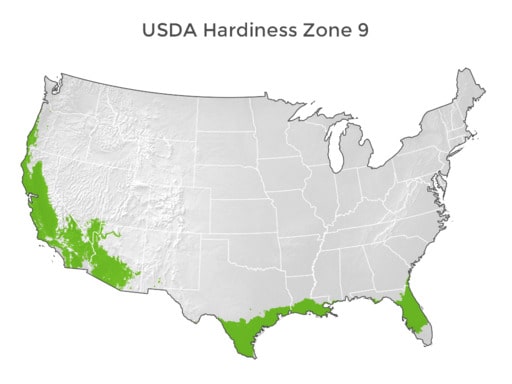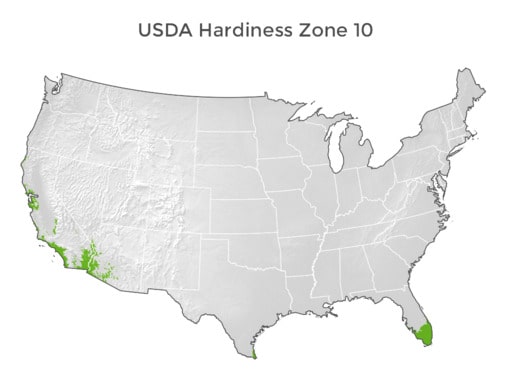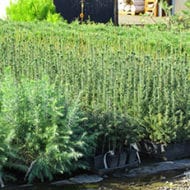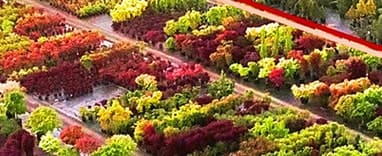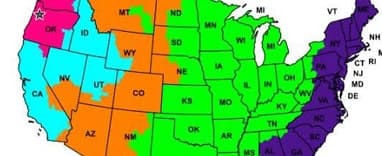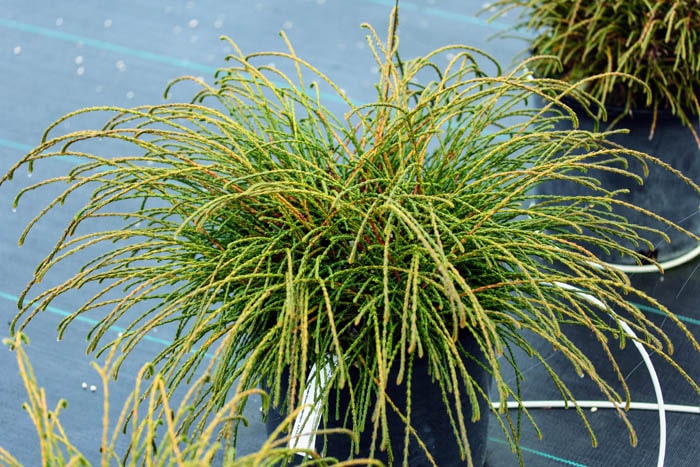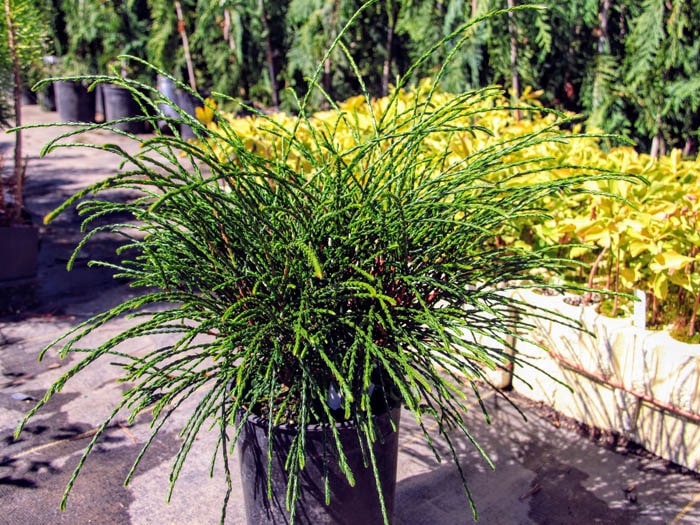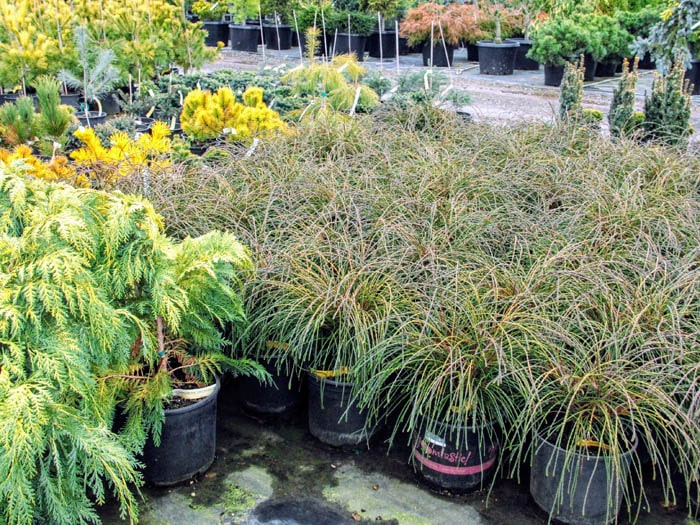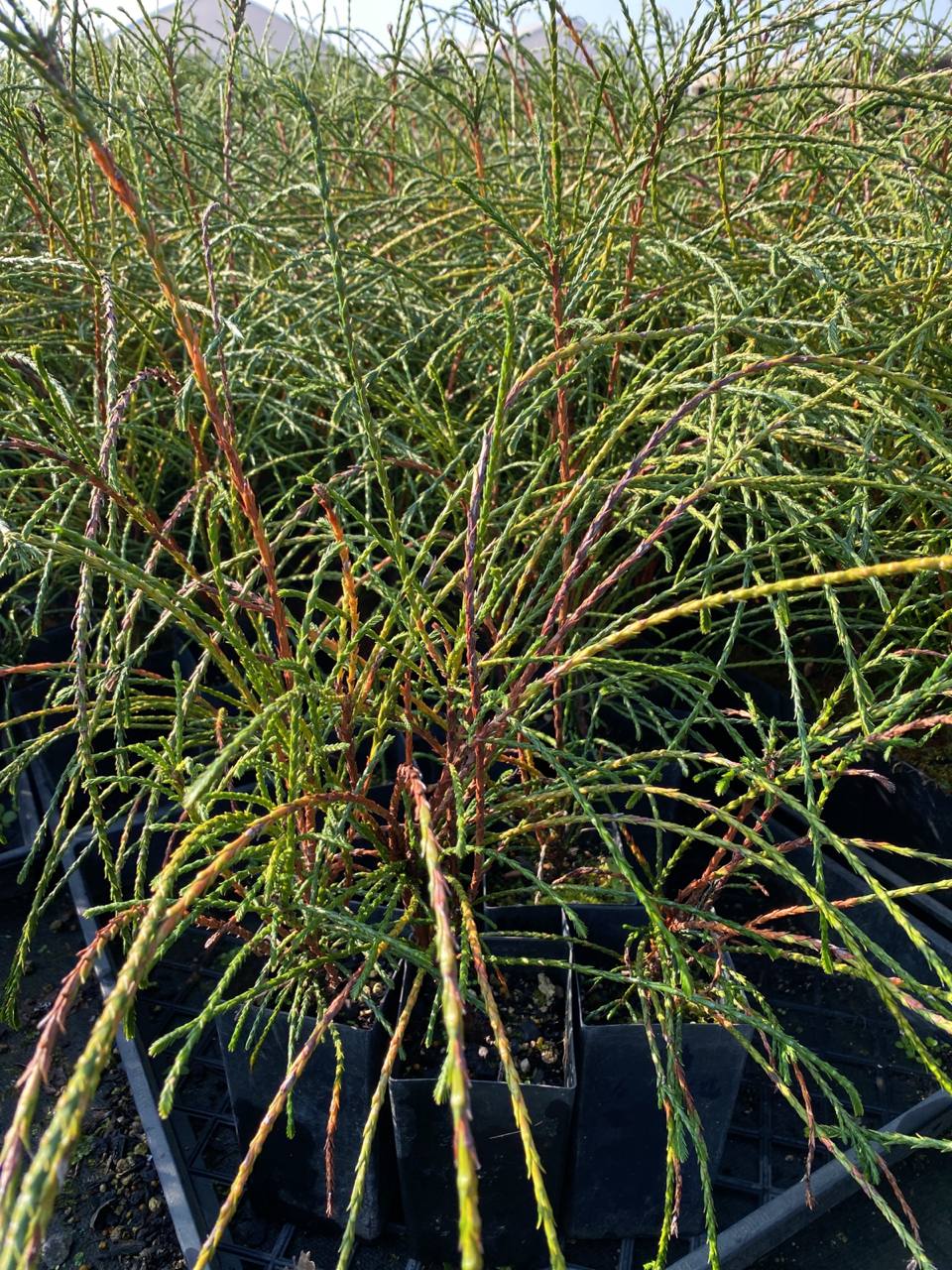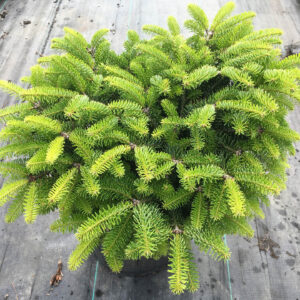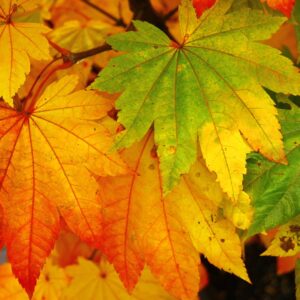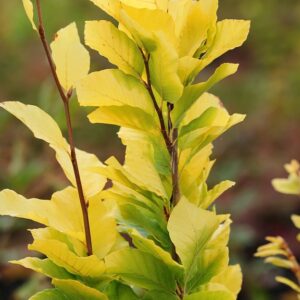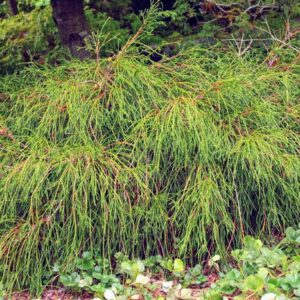
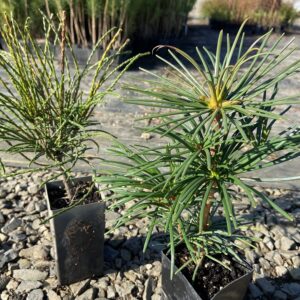
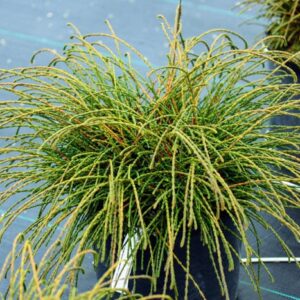
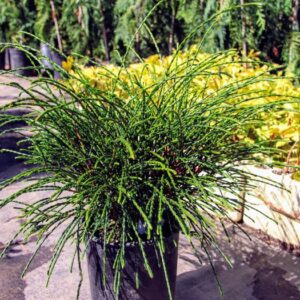
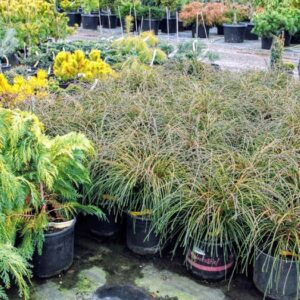
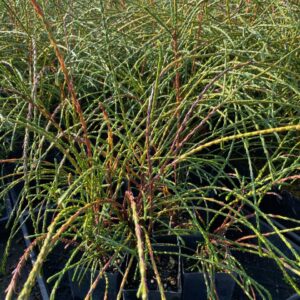
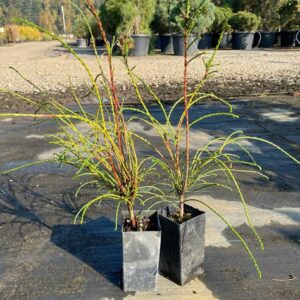
*Photos may demonstrate how the plant grows and do not necessarily pertain to the available crop(s).
Thuja plicata ‘Whipcord’ Western Red Cedar
SKU: ThPli-Whipcord-0-0
Categories: Dwarf, Dwarf Conifers, Dwarf Conifers, Green, Green Conifers, Our Plants, Thuja - Arborvitae & False Cedars, Ungrafted Varieties, Zone 5, Zone 6, Zone 7, Zone 8
Tag: GS
Description
This peculiar variety looks like a firework of stringy foliage! Thin green branchlets radiate in all directions on this low, mounding conifer. Its fascinating texture and fun shape make it an excellent slow growing selection for most any garden.
USDA Hardiness Map

Plant Form

Whipcord is a wiry, dwarf variety of Western Red Cedar, Thuja plicata, native to the Pacific Northwest from Alaska to northern California. It was discovered in 1986 as a chance seedling by Barbara Hupp, co-owner of Drake Cross Nursery in Silverton, Oregon, and became a novelty. In 2012, it won the prestigious Royal Horticultural Award of Garden Merit for its hardiness and unusual foliage.
Whipcord Western Red Cedar’s threadlike branches flow gracefully down like a fountain. When young, it has a flattened top, but in a few years, it becomes mound-like. The unusual foliage is made up of tiny scales that clasp the thin branches. They are a glossy green color in spring and summer but turn an attractive bronze in the winter. The tree only grows 2″-4″ a year, reaching 2.5′ high and wide in 10 years. At maturity, it can grow to 4′-5′ high and wide.
This little tree is a show-stopper. Its stringy foliage and compact, weeping habit make it a quirky, fun addition to any garden. It is an excellent choice for small spaces, such as rock gardens, mixed conifer gardens, children’s gardens, city gardens, at the edge of woodland gardens, as a foundation planting, an accent plant, and in containers. In addition to its other virtues, Whipcord Western Red Cedar is deer- and rabbit-resistant.
Whipcord is a versatile plant that can grow in full sun or light shade in moist, fertile, well-draining soil. It prefers cool temperatures in the summer and protection from the afternoon sun in the warmest areas of its 5-7 hardiness zones. It should not be allowed to dry out and needs to be watered regularly during the first growing season and then during dry spells. Spreading a layer of mulch will help to maintain the soil moisture. Container-grown trees will need to be watered more frequently since their soil will dry out quicker. Pruning is usually not necessary except to remove dead branches.
Companion plants to grow nearby need to have the same cultural requirements as Whipcord. Rhododendrons, azaleas, smoke trees, hydrangeas, spiraeas, weigelas, and abelias do well in moist, sunny, or partially shady conditions. Birches, Japanese maples, redbuds, and dogwoods contrast nicely with Whipcord’s green, threadlike form. Flowering perennials like dwarf iris, lily-of-the-valley, sedums, Shasta daisies, Asiatic lilies, and daylilies bring a spot of color around the tree. Spreading perennials, such as pachysandra, hostas, ferns, periwinkle, creeping phlox, catmint, and euonymus, provide a contrasting texture to Whipcord’s form.
Whipcord Western Red Cedar’s threadlike branches flow gracefully down like a fountain. When young, it has a flattened top, but in a few years, it becomes mound-like. The unusual foliage is made up of tiny scales that clasp the thin branches. They are a glossy green color in spring and summer but turn an attractive bronze in the winter. The tree only grows 2″-4″ a year, reaching 2.5′ high and wide in 10 years. At maturity, it can grow to 4′-5′ high and wide.
This little tree is a show-stopper. Its stringy foliage and compact, weeping habit make it a quirky, fun addition to any garden. It is an excellent choice for small spaces, such as rock gardens, mixed conifer gardens, children’s gardens, city gardens, at the edge of woodland gardens, as a foundation planting, an accent plant, and in containers. In addition to its other virtues, Whipcord Western Red Cedar is deer- and rabbit-resistant.
Whipcord is a versatile plant that can grow in full sun or light shade in moist, fertile, well-draining soil. It prefers cool temperatures in the summer and protection from the afternoon sun in the warmest areas of its 5-7 hardiness zones. It should not be allowed to dry out and needs to be watered regularly during the first growing season and then during dry spells. Spreading a layer of mulch will help to maintain the soil moisture. Container-grown trees will need to be watered more frequently since their soil will dry out quicker. Pruning is usually not necessary except to remove dead branches.
Companion plants to grow nearby need to have the same cultural requirements as Whipcord. Rhododendrons, azaleas, smoke trees, hydrangeas, spiraeas, weigelas, and abelias do well in moist, sunny, or partially shady conditions. Birches, Japanese maples, redbuds, and dogwoods contrast nicely with Whipcord’s green, threadlike form. Flowering perennials like dwarf iris, lily-of-the-valley, sedums, Shasta daisies, Asiatic lilies, and daylilies bring a spot of color around the tree. Spreading perennials, such as pachysandra, hostas, ferns, periwinkle, creeping phlox, catmint, and euonymus, provide a contrasting texture to Whipcord’s form.
Additional information
| Weight | N/A |
|---|---|
| Latin Name | Thuja plicata 'Whipcord' |
| Plant Size | #1 Container, #3 Container, BP |
| Common name | Whipcord Western Red Cedar |
| Sun Exposure | Sun/Part Shade/Shade |
| ANNUAL GROWTH | 2-4" |
| HxW@10 Years | 2.5'x2.5' |
| Color | green |
| Form | Spreading/Prostrate |
| Growth Rate | Dwarf |
| Hardiness Zone | Zones 5-8 |
| Color | |
| Form | |
| Growth Rate | |
| Your auto-detected zip code |  |
| hardiness zone based on zip code |  |
| You can also try another zip code |


